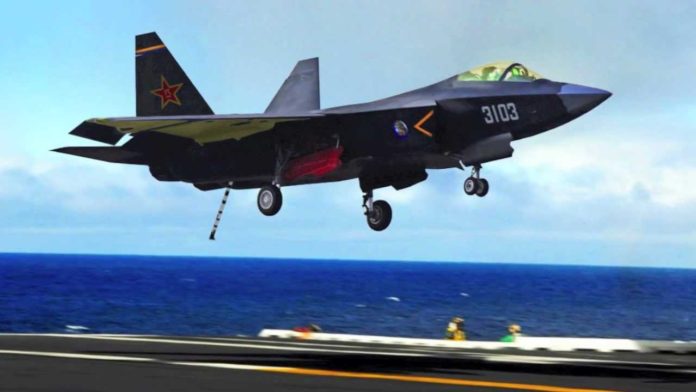China has long copied Russian weaponry. During the 1990s, China purchased Russia’s elite Su-27 fighter jets and S-300 missile systems. Beijing later used these as templates for developing its own J-11 fighter jet and HQ-9 surface-to-air missiles.Dec 20, 2019
“Unauthorized copying of our equipment abroad is a huge problem. There have been 500 such cases over the past 17 years,” said Yevgeny Livadny, Rostec’s chief of intellectual property projects on Dec. 14. “China alone has copied aircraft engines, Sukhoi planes, deck jets, air defense systems, portable air defense missiles, and analogs of the Pantsir medium-range surface-to-air systems.”
Rostec’s complaint about Chinese reverse engineering comes at a time when the arms trade between the two countries is thriving. According to the Stockholm International Peace Research Institute, Russia was by far China’s largest weapons supplier between 2014 and 2018, accounting for 70% of Beijing’s arms imports during that period.
Even Russia’s most advanced weaponry is not off-limits. Russia sold six of its S-400 anti-aircraft systems and 24 of its Su-35 fighter jets to China in 2015 for $5 billion.
Despite Moscow’s ire over Beijing’s theft of technology, it is unlikely to cut back arms exports to China anytime soon. Geopolitical and economic interests provide Russia with a strong incentive to downplay Chinese reverse engineering, experts say.
“It’s always bad when someone copies your weapons without permission,” said Andrei Frolov, editor-in-chief of Arms Exports journal. “But I think it’s fair to say that since Russia continues to cooperate militarily with China, this is not very critical [for Russia].”
China has long copied Russian weaponry. During the 1990s, China purchased Russia’s elite Su-27 fighter jets and S-300 missile systems. Beijing later used these as templates for developing its own J-11 fighter jet and HQ-9 surface-to-air missiles.
 Russia adopted several measures to stop the practice. For example, it insisted that China purchase arms in bulk instead of buying just a few samples — a sign that the arms were likely to be reverse engineered. Russia also pressed for assurances against theft in its contracts, and even tried to obtain royalties from Chinese copies of Russian arms.
Russia adopted several measures to stop the practice. For example, it insisted that China purchase arms in bulk instead of buying just a few samples — a sign that the arms were likely to be reverse engineered. Russia also pressed for assurances against theft in its contracts, and even tried to obtain royalties from Chinese copies of Russian arms.
“It’s impossible to copy some technologies in a reasonable amount of time,” Kashin said. “Copying old technology takes the same amount of time as developing new technology. It’s much easier to take China’s money, invest it in our own development, and let the Chinese do whatever they want.”
The burgeoning Moscow-Beijing geopolitical partnership has also helped ease Russian fears about the risks of arming China.
“If we look at how the Chinese are building up their military, we see that they are constantly cutting ground forces while strengthening their navy. That tells us something about their intentions; that their growing military power is aimed at America and its allies,” Kashin said.
But there are other concerns. China’s emergence as a major arms exporter in its own right, fueled by decades of high military spending and reverse engineering of foreign technologies, represents both “a crisis and an opportunity” for Russia, contends Arms Exports’ Frolov.
“On one hand, Russia is concerned that China will gradually squeeze Russia out of its traditional arms markets,” he said. “But on the other hand, China has money and a desire to cooperate, so this might be an opportunity for Russia to advance with the help of Chinese money and technology.”
Another challenge for Moscow will be keeping China interested as an arms partner, Kozyulin said. He noted that China’s military industrial complex has already surpassed Russia’s in a number of areas.
“It’s becoming increasingly difficult to offer China anything new, so Russian policy is to move away from arms sales to joint development,” he said. “I don’t know to what extent this new model will interest China, since it prefers to make everything on its own and only imports technologies from abroad. But Russia will try to find mutual interests and understanding.”
Stealing shamelessly
Recently, the American analytical publication The National Interest published material stating that China’s military might owes much to industrial espionage, a long-rooted habit of stealing other people’s technologies from Russia, the United States, and other countries and passing them off as their own. This allowed Beijing to actually stand on a par with Moscow and Washington in the production of modern weapons.
Indeed, since the 1950s, China has actively adopted the experience of tank building, rocket engineering, aircraft manufacturing, and also the production of various types of weapons from its senior comrades from the USSR. Much in China was produced under a Soviet license, but some due to a lack of authorized access to technology was openly stolen and copied. How can one not recall Khrushchev’s refusal to donate or sell to Beijing drawings of an intercontinental ballistic nuclear missile. Later, the Chinese still obtained the information they needed (apparently through the staff of the US and USSR design bureaus) and assembled their first rocket.
T-62
In March 1969, an armed conflict broke out between the USSR and China over the tiny Damansky Island, located on the Chinese side of the main channel of Ussuri. During the clashes, the Soviet armed forces used four T-62 tanks, which they were planning to throw on ice for the final expulsion of PLA units from the island. However, as soon as armored vehicles circled the island, they were met by hurricane fire of a disguised Chinese battery.
Three tanks managed to turn around in time and retreat to a safe distance, but the lead vehicle was hit, and its crew died. Since the combat vehicle was stuffed with modern electronic equipment, including night vision devices and a gun stabilizer, the Soviet military tried to evacuate it with a tractor, but the tank tightly froze to ice. As a result, they decided to drown the car, breaking through the ice with mortar fire. T-62 safely went to the bottom.
Resourceful Chinese still pulled the tank to land, attaching a cable to it with the help of divers. For several months, Chinese engineers screw-by-screw dismantled and studied the miracle of Soviet technology. The result of this work was the release of a new tank WZ-122 for the PLA, which was a complete copy of the T-62. According to experts, a copy that is much inferior to the original.
Tu-16

The Soviet T-16 heavy bomber was created at the Tupolev Design Bureau in the early 1950s, and literally three years after it began operating in the USSR, China acquired a license to build this machine. The first Chinese copy of the T-16 took off on September 27, 1957, with a new name – Xian H-6.
In the late 1950s, there was a deterioration in Soviet-Chinese relations, which affected joint projects. This deprived Beijing, which needed modern bombers, of the opportunity to adopt the Soviet experience in aircraft manufacturing. However, Chinese designers have found a way out. Having studied all the documentation for the Tu-16, they proceeded to create their own machine.
In 1964, experts from the Xian Aircraft Company were already ready to present a new model of the H-6A, which, in fact, was a slightly modernized version of the Tu-16 with Chinese filling. Due to the lack of supplies of engines from the USSR, the engineers of the Celestial Empire had to urgently start production of their own turbojet engines, which, although they copied Soviet models, were inferior to them in reliability.
MiG-21

When it comes to the Chinese military industry, it is often not easy to determine whether it is licensed or copied. As a rule, at first one or another type of armament or equipment was produced under license, in parallel, the development of the Chinese analogue, which completely copied the foreign model, began.
This happened with the light Soviet supersonic front-line fighter MiG-21, which in 1961, Moscow sold Beijing a license to restore shaky relations with China. However, in 1964, having lost the scientific and technical support of the USSR, on the basis of Soviet drawings, the Chinese built the Chengdu J-7 aircraft, which, of course, were considered to be their own merits.
Su-27, Su-33

Even more vividly, the Chinese copying technique manifested itself in the production of multi-role fighters Su-27 and Su-33. In 1992, China became the first country outside the former USSR to adopt the Su-27. But in 2003, the Celestial Empire refused to renew the license for the aircraft and began to produce its own copy, for which they heard Russia accused of piracy.
The fourth-generation fighter J-15 was originally considered to be the own development of the Shenyang Aircraft Corporation, although in reality it is a copy of the Russian carrier-based Su-33 fighter purchased from Ukraine. According to military expert Vasily Kashin, Moscow refused to sell these fighters to China, fearing a technology leak. Today, the Su-33 is one of the main fighters of domestic aviation.
Nevertheless, the Chinese were quite critical of this aircraft, calling it “fluttering fish” because of the low efficiency of takeoff from Chinese aircraft carriers. Among the shortcomings of the Su-33, the PLA leadership called it a heavy weight and a wing folding system. Now in Beijing, they intend to invest more in order to adapt the fighter to their own needs. The PLA plans to produce at least 1200 such machines.
“Varangian”

In 1998, China bought another sample of the Soviet defense industry from Ukraine – the heavy aircraft-carrying cruiser (TAVKR) Varyag, which rusted in the port of Nikolaev. The ship cost Beijing only $ 20 million. At first they planned to use the cruiser under the new name Liaoning as a floating entertainment center, but then decided to transfer it to the PLA’s Navy.
In 2011, Taiwan accused China of planning to build its own aircraft carrier based on a Soviet ship. Indeed, in 2016 it was confirmed that the construction of the Type 001A aircraft carrier, which largely repeated the design of both the former Varyag TAVKR and the Admiral Kuznetsov aircraft carrier of the Russian Navy, was being completed in China.



















































